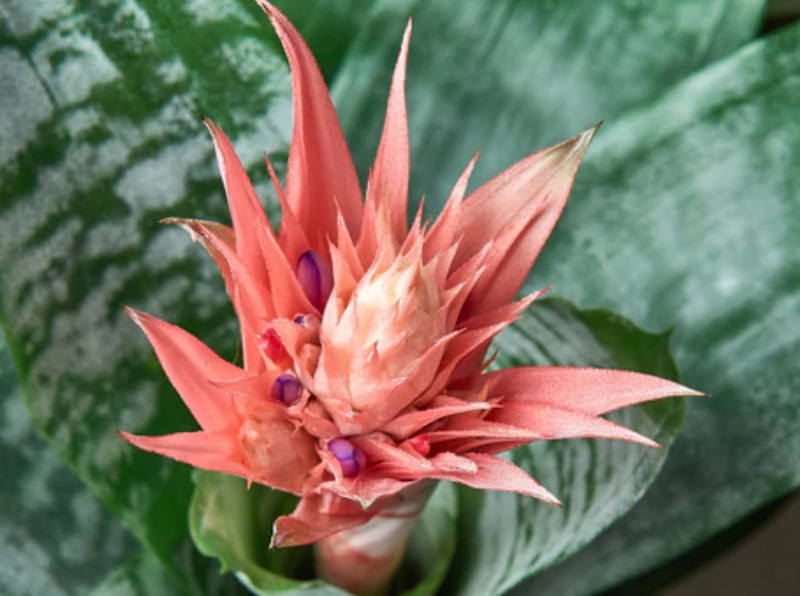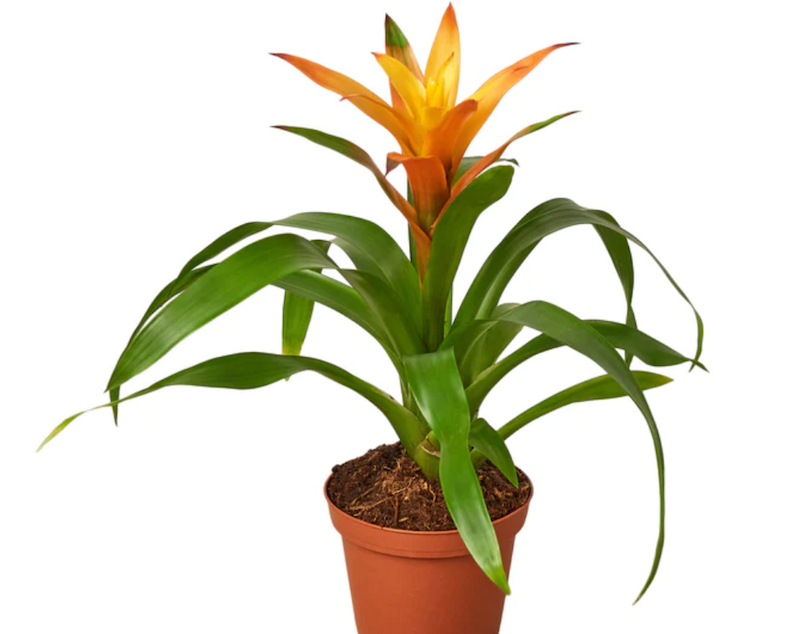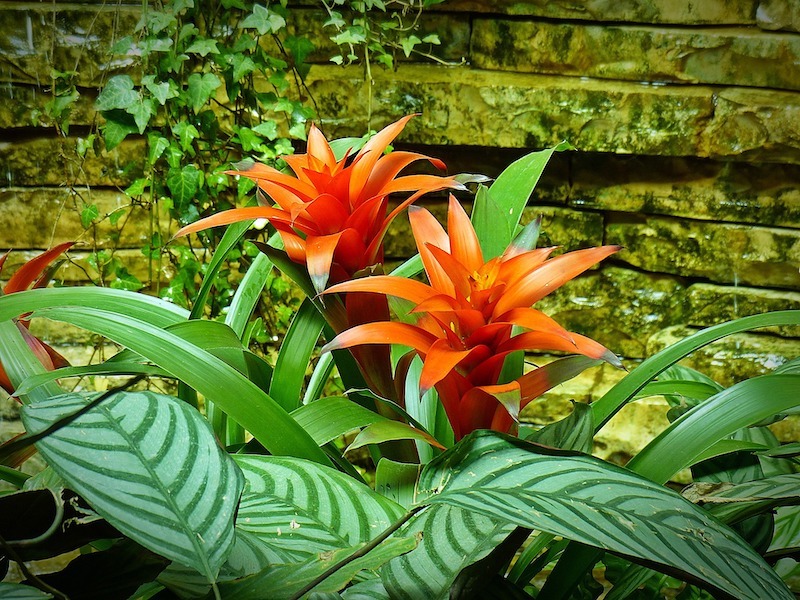Growing Bromeliads
The Bromeliad family of plants encompasses hundreds of diverse species, dozens of which are widely available as houseplants. These plants are noteworthy for their unique appearance and ability to add color to a home with their colorful floral bracts. Environmental factors and care methods vary depending on the specific bromeliad, but most share the same general requirements. Bromeliads are often slow growing and their mature height varies, with some growing up to 18 inches tall. Most bromeliads as houseplants are fairly easy to grow, so they are a good choice for beginners looking to add an especially tropical flair to an indoor environment.

Bromeliad Sunlight Requirements
Bromeliads thrive in bright indirect light. In general, the more rigid and colorful a bromeliad is, the more light it prefers. Softer and greener specimens can tolerate lower light. Direct light typically causes leaf scorch. A position near an east-, south-, or west-facing window but not in hot sun is a solid choice. If light is insufficient, plants may be duller in color and slow to initiate flowering and pup formation. The plant may also develop an awkward, elongated appearance in low light.
Planting Bromeliads
Many bromeliads are epiphytic, meaning that in nature they tend to grow on other plants or objects rather than rooting into the soil; their roots are primarily for anchoring. So, these plants require fast drainage from a potting medium, and any container should have ample drain holes. The roots of these plants grow slowly, so they rarely need repotting. If repotting is desired, only increase the pot size by one increment, and time the process for spring or summer when growth is most vigorous. For soil, choose or make something that is both rich in organic matter and very well drained. A mix blended for orchids works well. Another option is a blend of cactus or succulent mix, orchid bark, compost, and coco coir or perlite.

Watering Bromeliads
The leaves of many bromeliads are shaped to capture and slowly utilize rainwater. A grower can imitate this trait by watering near the base of the plant in the cup it naturally forms. It is also possible to water at soil level. Whether watering the leaves or growing medium, irrigate only when the soil feels dry to the touch about two inches below the soil surface. Avoid using softened water on bromeliads.These plants prefer rainwater. Distilled water or unsoftened tap water that has been sitting out for a day or so are also suitable. Bromeliads enjoy a fair amount of humidity and will look their best if humidity stays around 50 percent. Keep the plant on a pebble tray or near a humidifier or other houseplants if the surrounding air is too dry.
Fertilizing Bromeliads
Regular fertilizer applications will keep a bromeliad thriving. It is also important to encourage eventual flower and pup formation. During the spring through early fall, apply fertilizer once per month. Use a foliar fertilizer labeled specifically for bromeliads and spray it directly on the leaves. Alternatively, mix up and apply a balanced houseplant fertilizer at no more than about a quarter of the recommended rate on the label. Overfertilization can cause leaf burn, a loss of color, and a poor growth form.
Common Bromeliad Problems
Bromeliads are rarely bothered by diseases or pests. Overwatering or poor drainage often leads to root rot. Brown, dry leaves are usually a result of underwatering or low humidity. Diseases of bromeliads in the home are exceptionally rare. Occasionally, pests like scale, mealybugs, and mites may bother a bromeliad, especially if these pests are already on other houseplants nearby. Excessive light causes leaf scorch, while low light can lead to leaf yellowing and elongation. The leaves on old plants will naturally begin to turn yellow and die, especially following flowering and pup formation.
Propagating Bromeliads
Individual plants flower just once per lifetime before beginning to die back. While a mother plant flowers and dies, new young plants, or “pups” appear at the base of the mother plant. Bromeliads are propagated by separating these pups from the mother plant. Once pups reach about one-third the size of the mother plant, they are ready to separate. Gently tease pups away from the mother plant or use a sharp tool to cut them off, and position the pups in a container with orchid mix. The pups have the same care requirements as the mother plants, but err on the side of keeping them a bit drier to avoid issues with rot.

Growing Bromeliads Outdoors
Bromeliads can be kept outdoors when night temperatures stay above 50 degrees Fahrenheit and when days are between 70 and 90 degrees Fahrenheit. Outdoors, the bromeliad will still require bright indirect light to grow best. If the light outdoors is significantly more intense than indoors, slowly acclimate the plant to the brighter conditions over a period of a few weeks. Bromeliads kept outdoors will benefit from higher humidity and more frequent watering whenever temperatures are high or conditions are windy, so they may require more attention than when kept indoors. Prior to bringing these plants in when the weather begins to cool, check thoroughly for pests like mites, scale, and mealybugs.
 |
Author Angela Ryczkowski - Published 3-15-2023 |
